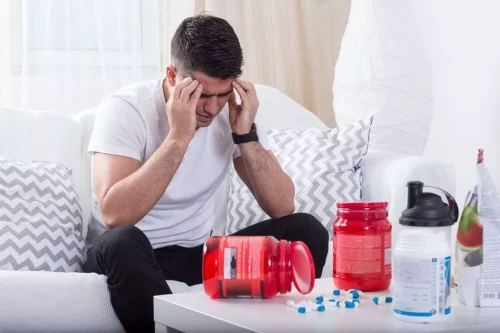
Amphetamine prescription labels state that psychotic episodes are rare at recommended doses, but that behavioral disturbance and thought disorder may be exacerbated in presence of pre-existing psychoses. A recent review of 54 scientific studies concluded that a single stimulant dose can produce a psychotic response in 50−70% of patients with schizophrenia and pre-existing acute psychotic symptoms and 30% of schizophrenics without acute symptoms 191. The authors present evidence, however, that low-dose antipsychotic treatment may reduce or how long do amphetamines stay in urine prevent sensitization in chronic stimulant users.
- This leads to a large release of cytoplasmic and vesicular stores of transmitter (Robertson et al., 2009).
- Recently, numerous off-label applications have been tested, including the treatment of ADHD, Alzheimer’s disease, Parkinson’s disease, depression, and cocaine addiction.
- Another study at a large, midwestern university surveyed 4580 undergraduates, revealing that 8.3% had used illicit prescription stimulants in their lifetime, and 5.9% in the past year (Teter et al., 2006).
Acute Physiologic Effects
A disrupted circadian rhythm can result from late or high doses of prescription amphetamines or from chronic or intermittent abuse of amphetamines. Individuals who use prescription amphetamines can easily correct their sleep disturbance by lowering the dose or taking their medication earlier in the day than they have been. In addition to this, patients who have an amphetamine use disorder and are entering substance abuse treatment centers have a higher likelihood of being referred by the criminal justice system than patients with all other substance use disorders combined (59% versus 38%).

Manifestations of Chronic Stimulant Use

MA can be detected in urine for approximately 48 hours following use, and cocaine metabolites may be detected for as long as 2 to 4 days following use (K. E. Moeller et al., 2017). Many prescription and over-the-counter medications (e.g., diet aids, cold remedies) contain phenylpropanolamine or ephedrine that may yield positive EMIT or radioimmunoassay tests for amphetamines. Certain agents (e.g., phenylpropanolamine, ephedrine) can produce cross-reactivity in amphetamine tests, causing immunoassays for the analysis of amphetamine-type substances to potentially produce false positives (K. E. Moeller et al., 2017).
Related treatment guides

Amphetamine users frequently develop dependence, often referred to as a substance use disorder. The greatest benefits of caffeine on cognition may lie in the realm of disease, with caffeine lending neuroprotective support against a host of conditions, ranging from the general effects of aging (Hameleers et al., 2000) to ADHD (Prediger et al., 2005). One community-based, observational study of older (age 50 years or older) adults found that lifetime coffee consumption in women was positively correlated with performance on measures of long-term memory, short-term memory, verbal fluency, and attention (Johnson-Kozlow et al., 2002). A study conducted in The Netherlands with a large number of participants (1875) stratified for age (24–81 years) found a positive correlation between habitual caffeine consumption and measures of simple response speed and verbal long-term memory (Hameleers et al., 2000).
- Because crystalline MA costs less per dose than other forms of MA and because the euphoria attained may persist for several hours, this form of MA delivery may be preferred.
- Cocaine also blocks sodium (Na+) channels, thereby acting as a powerful local anesthetic (Billman, 1990; Rump et al., 1995), its only medically approved use in the United States.
- Some postmortem studies have shown that even recreational doses of MA significantly expend dopamine levels (Boileau et al., 2016).
Amphetamine sulfate has a high potential for abuse and misuse, which can lead to the development of a substance use disorder, including addiction. Amphetamine has a high potential for abuse and misuse, which can lead to the development of a substance use disorder, including addiction. Many psychologic effects of amphetamines are similar to those of ; they include increased alertness and concentration, euphoria, and feelings of well-being and grandiosity.

